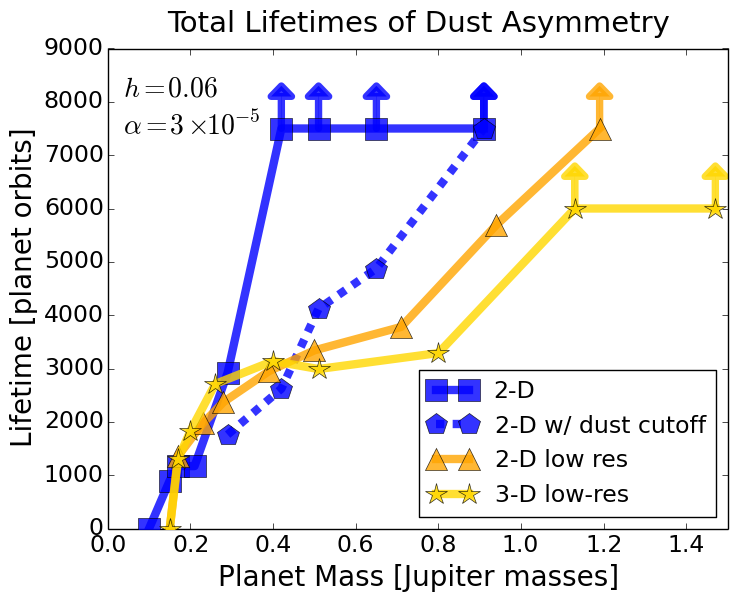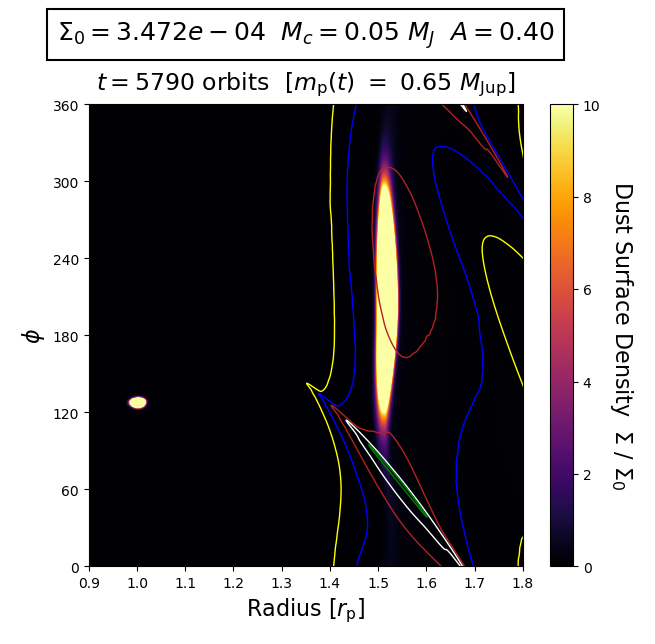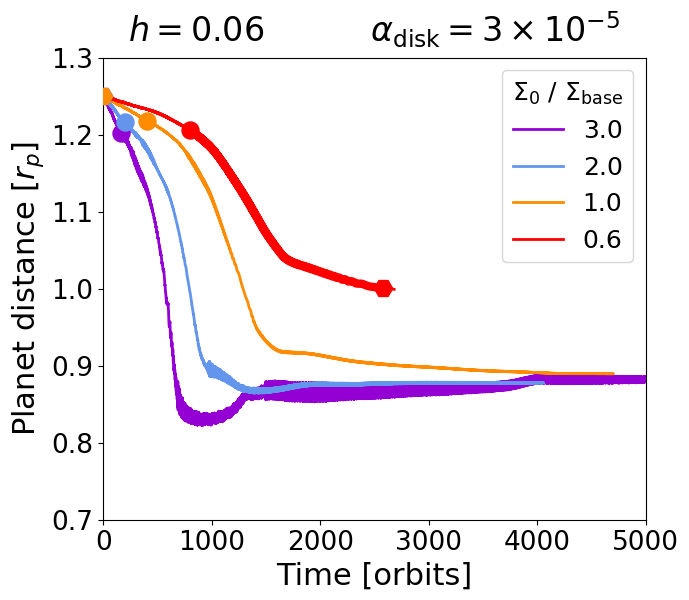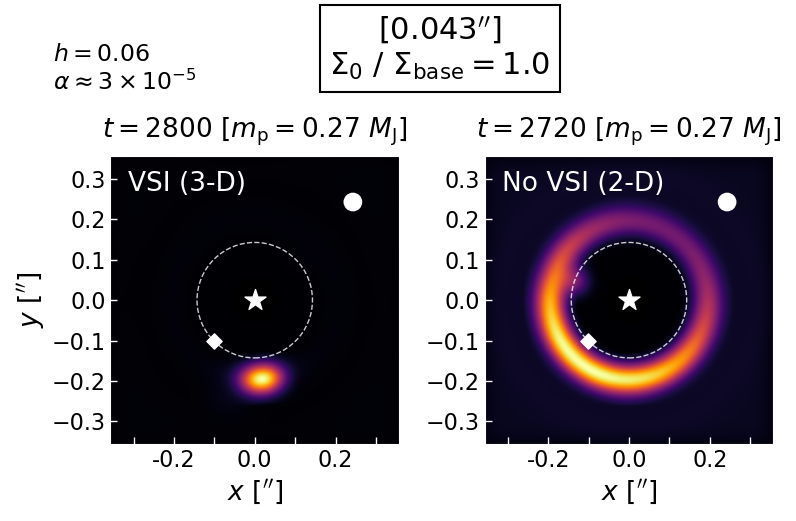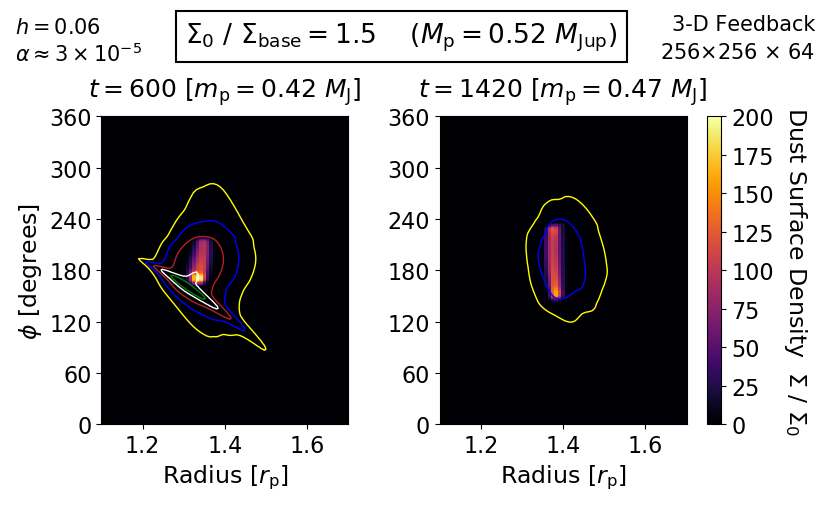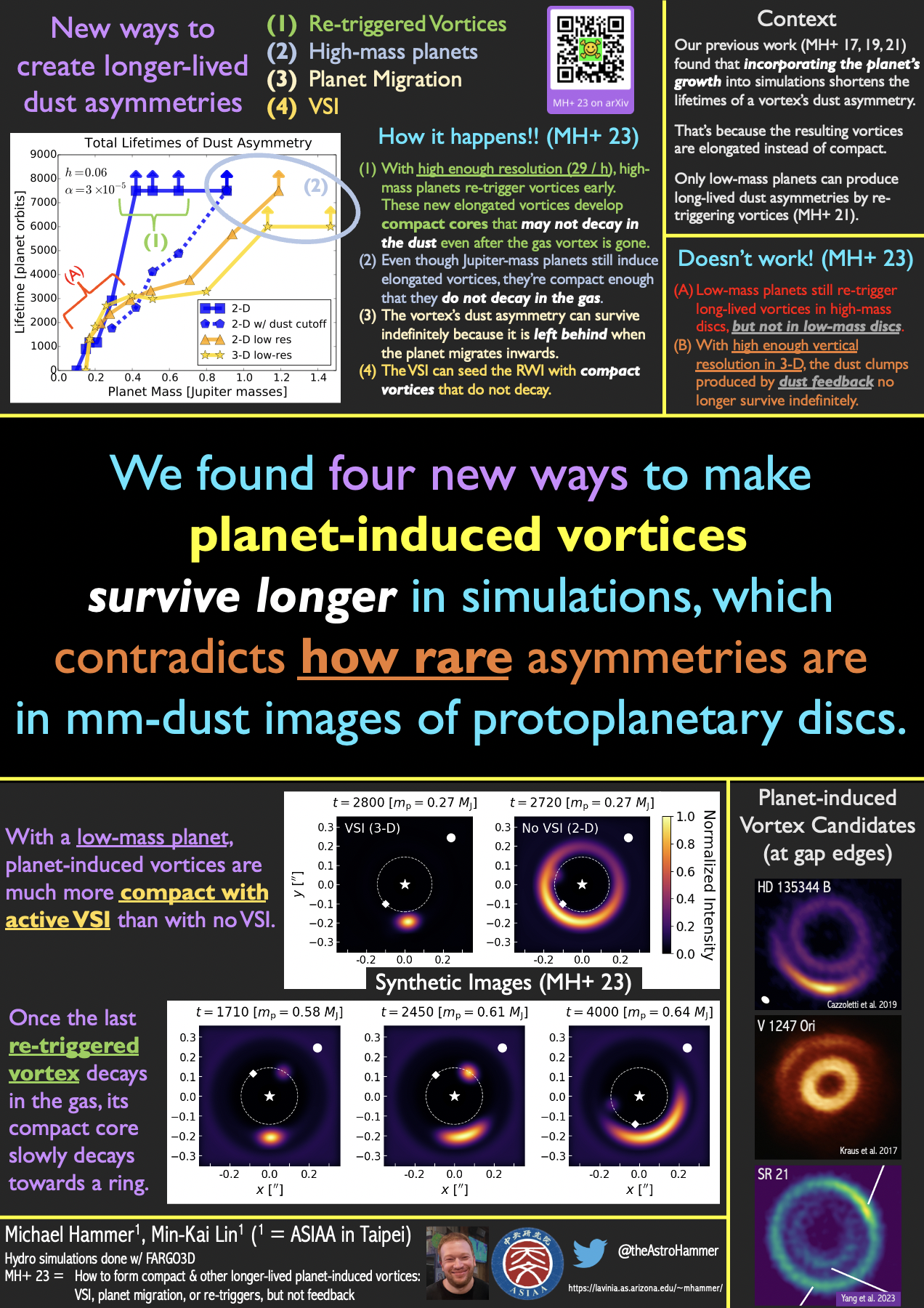Research Table of Contents
- Paper 1 (04/2017): Making simulations of planet-induced vortices more realistic.
- Paper 2 (01/2019): Connecting these simulations of planet-induced vortices to observations.
- Paper 3 (07/2021): Exploring how to extend vortex lifetimes even with realistic planet growth.
- Paper 4 (10/2023): Forming compact and other vortices that survive indefinitely.
- For the public.
Forming compact and other vortices that survive indefinitely.
MNRAS paper (10/2023): How to form compact and other longer-lived planet-induced vortices: VSI, planet migration, or re-triggers, but not feedback
CCA Planet Formation Group Meeting talk: CCA.pptx, PDF Version
In our previous paper, we found that vortices induced by low-mass planets were longer-lived than expected, which we didn't like because of how few vortex candidates are found in actual observations. To try to solve that discrepancy in this work, we tested if higher resolution, planet migration, and/or 3-D effects including the VSI could shorten vortex lifetimes to offset our previous results. Contrary to what we were hoping to find, we instead discovered that each of these effects not only extends vortex lifetimes, but can extend them indefinitely to the point where the vortex's dust asymmetry settles into a steady state that is still asymmetric.
Right: Example steady state of a dust asymmetry that no longer decays. The gas asymmetry decayed within 2000 orbits, but the dust persists as a remnant of what was once a compact vortex.
The above pattern of vortex lifetimes is the complete opposite of our previous paper where we found low-mass planets induce the longest-lived dust asymmetries by re-triggering later-generation vortices. In this work, because of the higher resolution, the higher-mass planets are now able to re-trigger vortices too, which can ultimately result in a final steady state that isn't a ring like the one shown above.
Meanwhile, the lower-mass planets in this work do not re-trigger vortices anymore. This isn't because of the resolution, but because we grew the lower-mass planets from lower-mass discs, in contrast to the last paper when the disc mass was fixed.
But how do the higher-mass planets end up producing asymmetric steady states?
The asymmetric steady state is the end result of compact vortices decaying. All the initial and later-generation vortices that form are still elongated like in our previous work, but the difference is later-generation vortices can develop much smaller compact cores inside the bigger vortex. These compact cores collect much of the dust in a very confined area. When the final elongated vortex decays in the gas, the compact cores still remain awhile longer. These compact cores than decay in the vorticity, leaving behind a compact dust asymmetry that very slowly decays into the asymmetric steady state.
This only happens with higher-mass planets. Does the dust asymmetry still reach an asymmetric steady state if the planet is migrating?
Right: Example dust evolution of vortices with the planet migrating. The initial outer gap edge gets left behind, allowing two separate vortices to form, but the initial vortex cuts off most of the dust supply to the new one. Like the static planet cases, the dust asymmetry survives indefinitely.
Even if the higher-mass planets migrates, the dust asymmetry still reaches an asymmetric steady state. Unlike with a static planet, though, this asymmetric steady state arises even without any compact cores. Instead, the dust asymmetry survives indefinitely simply because the planet migrated away from the initial vortex, too far away to affect it as much as it usually does.
When the planet is migrating away, the initial outer gap edge gets left behind and a new outer gap edge arises that also forms a vortex. However, there is little to no dust to populate this vortex because the initial vortex cuts off the dust supply.
Can these dust asymmetries still survive indefinitely in 3-D?
In 3-D, the dust asymmetry associated can survive indefinitely for yet another reason, the VSI. Not only does the VSI extend dust asymmetry lifetime, it also makes the vortex compact in both shape and Rossby number (Ro < -0.15), something we rarely see when incorporating the planet's growth. The RWI vortex becomes compact because it grows out of the tons of tiny vortices produced by the VSI, which are also compact. Because the RWI vortex ends up compact, it decays extremely slowly and is basically a steady state.
Previous studies with dust feedback also produced vortices with similar appearances. Does that hold up in 3-D?
With sufficient vertical resolution, we find that dust feedback doesn't actually make vortices appear compact. They do form a compact clump like in 2-D or with lower vertical resolution, but the rest of the dust is spread out, giving the vortex an elongated apperance.
Poster
Contact Info
Find me in my office, or send me an email!
